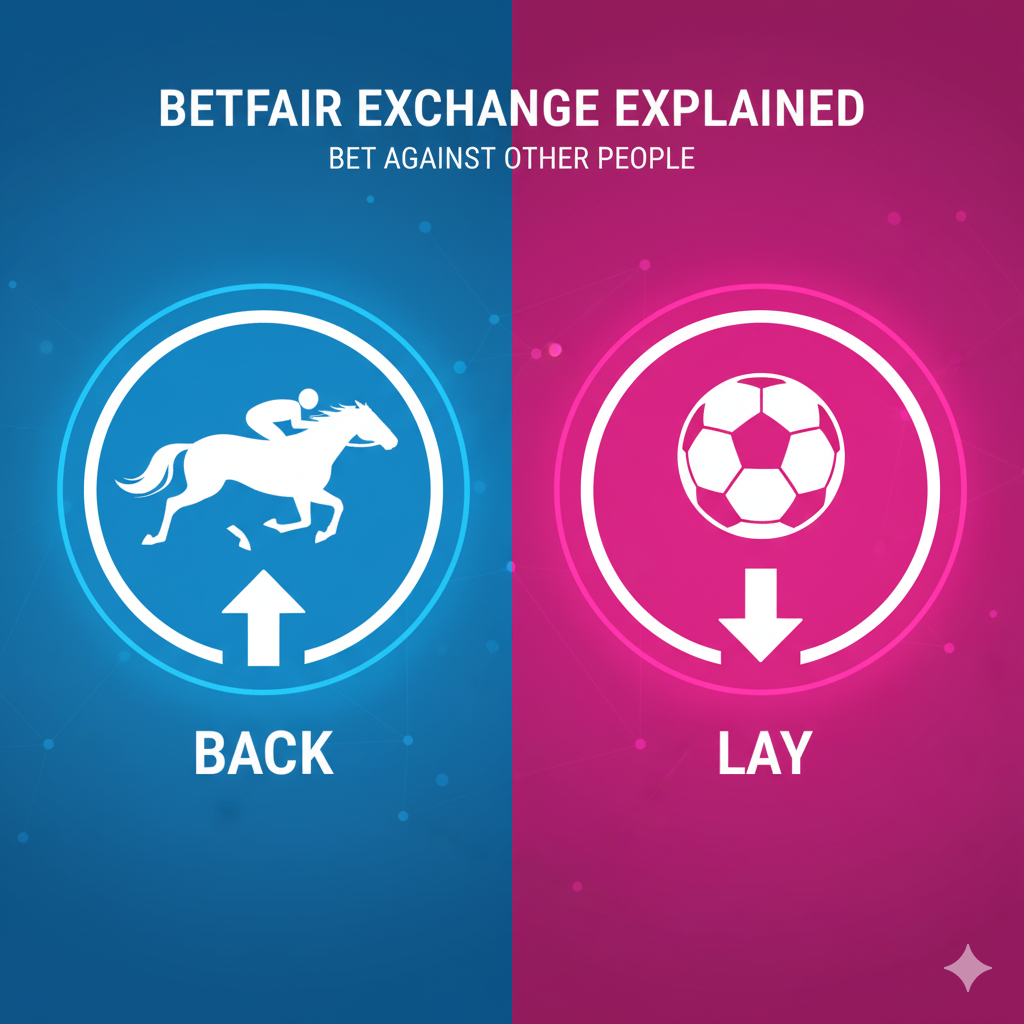An introduction is provided to the structured world of pre-race horse racing trading. Fundamentally, unlike traditional betting, where a horse is simply backed to win, trading is defined by the exploitation of odds fluctuations to secure a profit irrespective of the winner. Consequently, it is a discipline rooted in analysis, timing, and control. While in-play trading is associated with high adrenaline, the pre-race trading environment is conversely valued for its analytical nature, where calculated decisions can be made before the race’s commencement.
Therefore, this guide has been designed as a comprehensive manual for the development of a robust pre-race horse racing trading strategy. Subsequently, all elements will be covered: from the foundational philosophy to the precise selection of races, the identification of trading vehicles, the execution of trades, and finally, an exploration of automation.

Part 1: The Trader’s Mindset – A Distinction from Gambling
First and foremost, a fundamental truth must be internalized before any analysis is undertaken: Successful pre-race trading is not to be confused with gambling. To illustrate, risk is accepted by a gambler for the chance of a reward. In contrast, risk is managed and offset by a trader to lock in a guaranteed profit, a state known as a “green book” across all runners.
As a result, the goal is to place trades that possess a positive expected value over time. Naturally, losing trades will be incurred; this is inevitable. However, with a solid strategy, winning trades can be made to outweigh losers. For this reason, discipline is regarded as the most valuable asset.
Part 2: The Core Pre-Race Trading Strategy – “Laying the Steamers”
The most common and effective pre-race strategy is widely referred to as “Laying the Steamers”. The principle is outlined as follows:
- Firstly, a strong favourite is identified: Specifically, a horse that is shortening in price rapidly in the final 10-30 minutes before a race. This horse is designated a “steamer.”
- Secondly, a LAY bet is placed: In other words, a bet is placed against this horse winning the race. It is laid at a lower odds number (e.g., Lay at 2.50).
- Following this, a price drift is awaited: Often, the initial steam is caused by a few large bets, but the momentum cannot be sustained. Therefore, the market is corrected, and the odds are observed to drift back out (e.g., to 3.50).
- Finally, a BACK bet is placed: Namely, a bet is now placed on the same horse to win at these higher odds. Thus, the initial lay bet is offset, and a profit is guaranteed regardless of the outcome.
Why this strategy is effective:
The pre-race market is recognized as being incredibly sensitive. For instance, a horse can be caused to shorten dramatically by a few large bets. However, once that initial money is absorbed, the price is often stabilized or even drifted as the opposing view is taken by other shrewd bettors. Ultimately, it is essentially bet that the initial move was an overreaction.
Part 3: Selecting the Right Races – The Hunting Ground
Importantly, not every race can or should be traded. Above all, liquidity and predictability are established as key. Therefore, races that meet the following criteria should be focused on:
- High-Class Meetings: Primarily, major UK and Irish meetings like Cheltenham and Royal Ascot are prioritized. The most money is attracted here, meaning higher liquidity is found.
- Handicaps: Additionally, handicaps are designed to be competitive. As a result, a crowded betting market is often created where favourites are less certain, and money moves erratically—conditions that are considered perfect for pre-race trading.
- Large Fields (12+ Runners): Furthermore, more runners are associated with more money in the market. Conversely, small fields (less than 6 runners) are to be avoided as the markets are often too efficient.
- Novice/Juvenile Races Are Avoided: Similarly, races for inexperienced horses are known to be unpredictable. Moreover, form is deemed unreliable, and the market can be based on hype.
- Race Time: Typically, the most liquid period is between 12:00 pm and 4:00 pm UK time on weekdays and all day on Saturdays. In comparison, evening and late-night races from other countries are noted to have significantly less liquidity.
Ideal Race Profile: To summarize, a Class 2 Handicap at a major meeting with 14+ runners, starting in the afternoon, is regarded as the perfect arena for pre-race trading.
Part 4: The Critical Role of Matched Volume
Next, matched volume is established as a non-negotiable filter. Specifically, Matched volume is defined as the total amount of money bet on a market on the Betfair exchange.
Its importance for pre-race trading is explained:
- Liquidity: Primarily, high volume ensures that bets can be matched quickly and at the desired price. Otherwise, in a low-volume market, the price can be moved by your own bet.
- Market Efficiency: Additionally, a more efficient and “true” market is created by high volume. Although inefficiencies are traded, it is desired that this is done in an efficient market.
- Slippage Prevention: For example, in a liquid market, the spread is kept narrow. In contrast, in a low-volume market, the spread can be wide, making it expensive to trade.
Minimum Volume Requirements:
- Total Race Volume: Accordingly, a race where the total matched volume is less than £100,000 should not be traded. For a serious focus, races well over £250,000 are targeted.
- Individual Horse Volume: Likewise, any horse that has less than £20,000 matched on it should be avoided.
In conclusion, a pre-race trading strategy cannot be effectively executed in a market with low volume.
Part 5: Picking the Best Horse to Trade – The Art of Selection
Furthermore, this is considered the most crucial skill. Notably, the winner is not sought; instead, the horse most likely to have volatile odds movement is identified.
Step 1: The Market Movers Are Identified
Initially, which horses are being heavily backed must be determined.
- Oddschecker: For this purpose, this site is highly recommended. Specifically, the “Market Moves” tab is used to find horses showing a blue downward arrow across multiple bookmakers.
- Sporting Life: Alternatively, the “Market Rasper” indicator is utilized to find supported horses.
The Target: As a result, 1-2 horses that have shortened significantly across multiple bookmakers are identified.
Step 2: The Move Is Interrogated
Subsequently, whether the move is “smart money” or not must be determined.
- Is the move justified? For instance, Racing Post is consulted.
- Form: Subsequently, it is assessed if the horse has been running well in suitable conditions.
- Jockey/Trainer Form: Also, it is checked if the jockey or trainer is in form.
- Is the move suspicious?
- For example, a horse from a smaller stable with mediocre form that is being backed is often seen as a “gamble” and can be prime for a drift.
The Goal: Ultimately, a horse that is steaming without a rock-solid, obvious reason is sought.
Step 3: The Opposition Is Identified
Finally, the other horses at the top of the market are examined.
- For instance, the presence of another well-fancied horse could create a “pinch” point where money flip-flops.
- Moreover, a favourite in the 2.0 – 5.0 range is preferred, as there is more room for movement.

Part 6: The Execution – How and When to Trade Using The Geeks Toy
Following this, the practical application of pre-race trading is demonstrated here using The Geeks Toy.
Minimum Volume of Money Required:
To begin, a £500 bankroll is suggested to start. Most importantly, no more than 2% (£10) should be risked per trade.
The Step-by-Step Pre-race Trade:
- Setup: Firstly, about 30 minutes before the race, the software is opened and the race is navigated to. Consequently, the matched volume is confirmed.
- Confirmation: Secondly, the odds graph is watched to confirm the steam on Betfair.
- The Entry (The LAY): Thirdly, the horse is laid as its price seems to be stabilising at its lowest point. Specifically, a small bounce is waited for.
- The Exit (The BACK): After that, a back bet is placed at a higher price. This can be done either via a limit order or manually.
- Greening Up: Finally, once the back bet is matched, a profit is shown on all other runners. Therefore, this profit can be locked in by clicking “Green Up”.
When to Abort: However, if the horse continues to steam, losses must be cut. In other words, the position is closed manually to limit the loss.
Part 7: The Automation of Pre-Race Trading – The Bot Question
Lastly, the automation of this pre-race trading strategy is often desired. However, the short answer is: It is extremely difficult and not recommended for beginners.
For example, automation features in The Geeks Toy and Bet Angel can be used to set rules.
The Problems with Automation are noted:
- Lack of Nuance: Specifically, the reason for the steam cannot be interrogated by a bot.
- Market Micro-Structure: Similarly, the depth of the market cannot be seen by a bot.
- Technical Execution: Furthermore, a profitable automated strategy requires deep knowledge.
Verdict: Therefore, automation is best used as a tool to assist manual pre-race trading, not replace it. In summary, the human element is currently deemed irreplaceable.
Conclusion: The Path to Consistency in Pre-Race Trading
In conclusion, pre-race trading is a skill that is built over time. Clearly, it is not a get-rich-quick scheme.
To summarize the key steps:
- Start Small: Specifically, a small bank and liability are used.
- Volume is King: Accordingly, illiquid markets are avoided.
- Paper Trade First: For instance, the strategy is practiced without real money.
- Focus on Quality, Not Quantity: In other words, perfect races are focused on; trades are not forced.
- Keep a Journal: Subsequently, every trade is recorded to refine the edge.
- Embrace Losses: Ultimately, losses are accepted as tuition fees.
By following this framework, a sustainable pre-race trading strategy can be built.
Disclaimer: Trading on Betfair involves risk. Money can be lost. This article is intended for educational purposes only and is not to be considered financial advice. It is always advised to gamble responsibly.

Betfair Bot Reviews: Which One Suits You Best?
Which Automated Betfair bot Trading Software is Right For You? Choosing the best Betfair bot in 2025 can be a…

The Ultimate Betfair Trading Guide: History, Strategies
Betfair trading is the secret that professional gamblers don’t want you to know. For decades, the game was rigged. You…

Backtesting Guides
Backtesting Guide — Principles & MarketBook Replay | BotBlog Backtesting guides Published: 2025-11-11 • BotBlog Backtesting Guide — Principles &…

Lesson 7 — Risk management & deployment
Skip to content Lesson 7 — Risk management, hedging & deployment Final crypto lesson: implement hedging/green‑up, enforce risk limits and…

Lesson 6 — Backtesting & simulation (Jupyter)
Skip to content Lesson 6 — Backtesting & simulation (Jupyter) Simulate strategies in Jupyter: load historical ticks/candles, replay data, simulate…

Lesson 5 — Webhooks & Pine alerts
Skip to content Lesson 5 — Webhooks & Pine alerts Build a secure webhook receiver for TradingView Pine alerts, validate…

Lesson 4 — Order placement & fills (testnet)
Skip to content Lesson 4 — Order placement & fills (testnet) Place limit and market orders on exchange testnets, handle…
